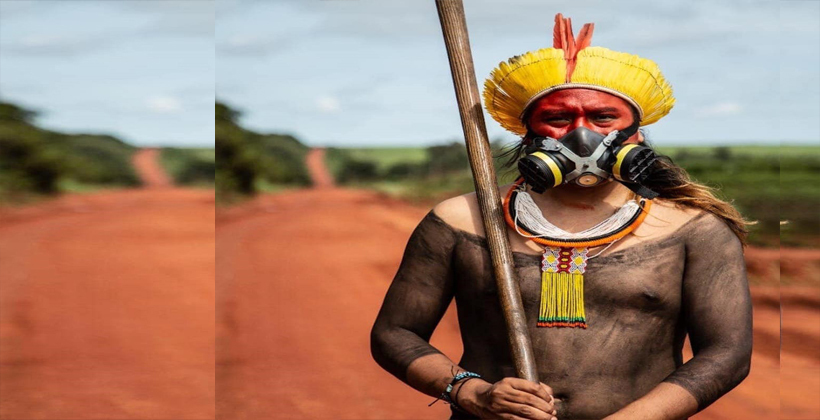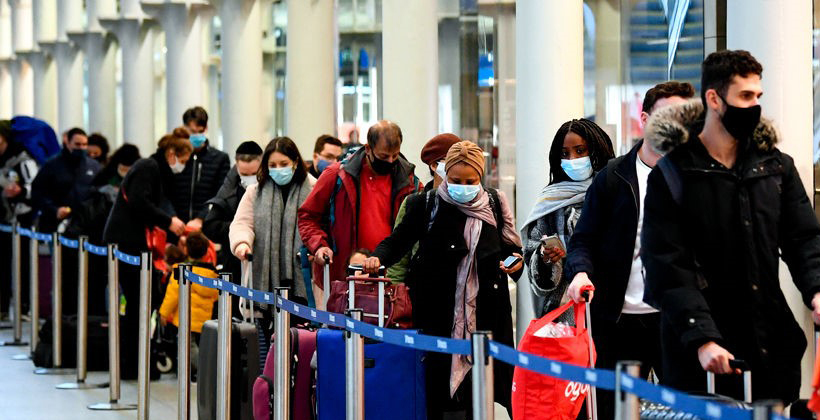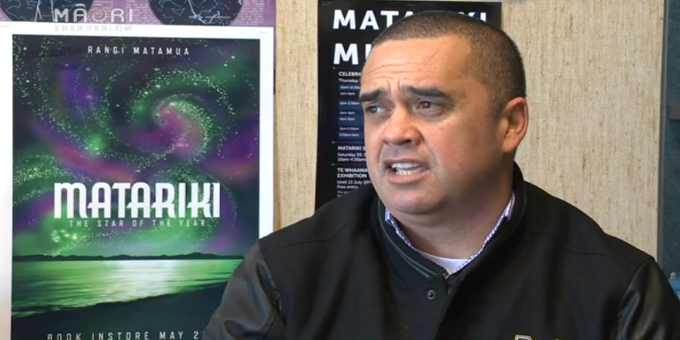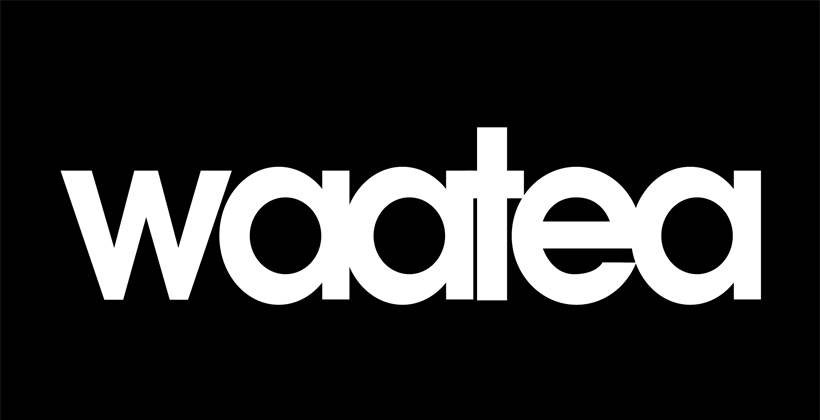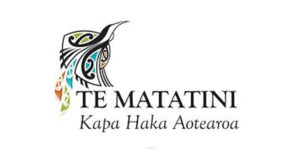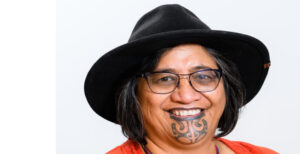November 23, 2021
Dr Rawiri Taonui | Another Māori death and highest cases since Covid-19 began

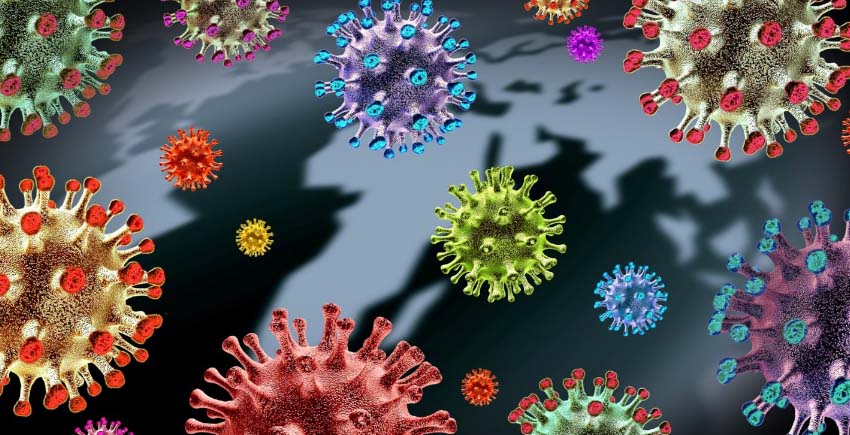
There are 204 new Delta cases today. Total Delta cases passed the 7,000 mark today.
Most new cases are in Auckland. The continuing steady rise of new cases in the Waikato (20), Northland (4), Bay of Plenty (5) and Lakes (1) is a considerable concern. The Māori full vaccination rate in each of these District Health Boards ranges between 40% and 60%. With the Waikato and Northland having recently moved to Alert Level 2, there is a significant risk of further increases amongst Māori communities. Rising cases in the Waikato, Bay of Plenty and Lakes increases the risk of transmission into other low-Māori vaccination DHBs, particularly when the Auckland border opens on 15 December.
The absence of new cases in Canterbury and Nelson-Marlborough is positive. The absence of new cases in Capital & Coast, MidCentral, Taranaki and the Wairārapa is also positive. How long these North Island DHBs can hold out once the Auckland border opens is moot.
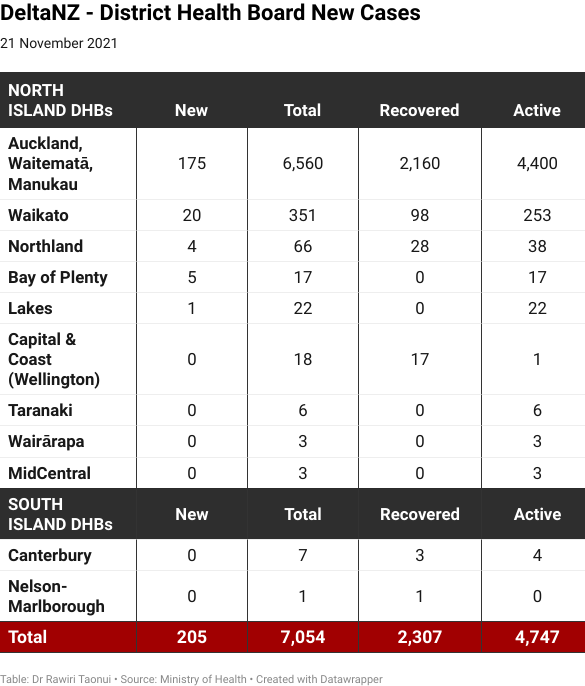
Photo Supplied
Māori Cases
There were 105 new Māori cases. Māori are the highest number of cases for the 50th consecutive day. Māori numbers passed the 3,000 mark today.

Photo Supplied
Māori Deaths
The Ministry of Health announced the 14th death in the Delta OutBreak today. This is the 6th Māori death. The Māori death rate is 1 in 138 resolved cases (either recovered or died). This is 20% higher than the national death rate of 1 in 173 resolved cases.
From what we know, three of the Māori deaths were men aged in their 40s and 50s. This is commensurate with the risk profile of Māori re: comorbidities and younger age vulnerability.
Based on comparing ethnic populations with total and resolved cases (who have recovered or passed away), a Māori person is 3.7 times more likely to catch Delta, 2.3 times more likely to suffer severe sickness and be hospitalised, and 3.1 times more likely to die from Delta.
Total Covid-19 Cases
In another milestone, total Covid-19 cases since February last year passed the 10,000 mark today. Yesterday, total Māori cases since Covid-19 arrived in Aotearoa passed the total for Pākehā making Māori the highest impacted demographic. As of today, there have been 3,249 Māori Covid-19 cases compared to 3,153 for Pākehā.

Photo Supplied
Te Tiriti o Waitangi
Māori were the least impacted population during the first 18-months of Covid-19’s arrival in New Zealand. Māori are 16.7% of the population. In May, at just 7.9% (208) of all Covid-19 cases (2,644), Māori were the only ethnic group with a case-population ratio less than 50% of demographic. Māori were also the least impacted demographic during the first few weeks of the Delta OutBreak. On 1 September, Māori were 5.7% of Delta cases.
Māori now have the highest number of cases (2,211) in the Delta OutBreak. Māori are also the highest number of cases (3,249) since Covid-19 first arrived in Aotearoa cases. There are three reasons for this.
Firstly, the Ministry pandemic response has failed to properly prioritise and protect the Covid-19 risk to Māori health under Te Tiriti o Waitangi. The Ministry completed the National Influenza Pandemic Plan in January 2017. Despite 250 years of differential Māori suffering in every pandemic-epidemic to arrive in Aotearoa, over the three years to the Delta OutBreak the Ministry failed to write a Māori Pandemic Plan. A Strategic Māori Strategic Plan did appear in April last year. A cut-and-paste from different Ministry documents, the plan was without prior and informed consultation and consent from Māori.
Māori were prioritised for Covid-19 testing on 1 April last year. The rollout was shambolic. There is evidence that some DHBs turned away high numbers of Māori for testing. At least one DHB declined to allow qualified Māori medical staff to conduct tests.
The locating of Managed Isolation and Quarantine facilities in high- demographic Māori areas, like South Auckland, Hamilton and Rotorua was poorly judged. Coupled with the Ministry failing to continue surveillance testing in South Auckland during July last year, this led to the Auckland August OutBreak, during which Māori and Pacific Peoples made up differential cases numbers.
The vaccination rollout this year was structurally racist. The descending age structure privileged 650,000 Pākehā aged over 65yrs while under-prioritising 220,000 Māori aged over 45yrs whose risk profile was the same as that for 65yr old Pākehā.
The age structure also prevented the vaccination of Māori as whānau, the importance of which was noted in New Zealand more than 130 years ago. The rollout also pushed 300,000 Māori in our high youth demographic to the end of the queue.
The poor vaccination roll stems from a Ministry failure to include Māori health experts on the vaccination governance and operational committees. With Māori experts confined to a peripheral ‘advisory group,’ the Ministry ignored their advice.
Thirdly, the change in government strategy to open the country has at each stage led to new surges in Māori cases. Shifting Auckland to Alert Level 3 on 22 September led to a surge in Māori cases the continuing calamity of which is Māori toping daily cases for 50 consecutive days. Moving Auckland to Alert level 3 Step 2 on 11 November has pushed Māori to over-50% of new cases every day since.
Milestones for Māori
22 September: Auckland moves from Alert Level 4 to Alert Level 3.
• 29 September: Māori passed demographic reaching 16.9% of all cases.
• 30 September: Māori cases pass the combined total of Pākehā, Asian and MELAA.
• 5 October: Māori became the highest number of active cases.
7 October: Auckland moves to Alert Level 3 Step 1.
• Māori surge leads to 50 consecutive days Māori highest cases.
• 2 November: Māori pass Pacific Peoples as the ethnicity with the highest number of cases.
11 November: Auckland moves to Alert Level 3 Step 2.
• Māori cases top 100 per day for seven days.
• Māori more than 50% of all new cases every day since 11 November.
• 21 November: Māori cases pass Pākehā cases as highest cases since the Covid-19 pandemic reached New Zealand in February last year.
Projecting Case numbers to Christmas
Projecting the current 7-day rate of daily and Māori cases there will be 13,200 total cases in the Delta OutBreak by Christmas of which 6,400 will be Māori.
This projection is marginally lower than last week due to a lull in cases below 190 per day over the last six days. This may well be the calm before the storm that begins on 15 December.
Noho haumaru, stay safe.
Dr Rawiri Taonui

